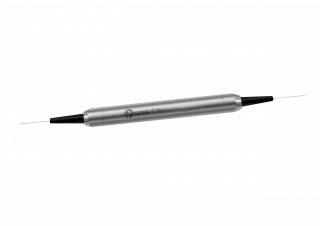Polarization Control
Frequently Asked Questions
What is polarization control in fiber optics?
Polarization control in fiber optics refers to the ability to manipulate the polarization state of light as it travels through a fiber optic cable. This is important because the polarization state of light can affect its transmission properties and can impact the performance of certain types of fiber optic devices.
Why is polarization control important in fiber optics?
Polarization control is important in fiber optics because the polarization state of light can have a significant impact on the performance of certain types of fiber optic devices. For example, some types of optical filters and modulators require light to have a specific polarization state in order to function properly. By controlling the polarization of light in a fiber optic system, it is possible to optimize the performance of these devices and improve overall system performance.
What are some methods for controlling polarization in fiber optics?
There are several methods for controlling polarization in fiber optics, including the use of polarization-maintaining fibers, polarizers, and wave plates. Polarization-maintaining fibers are specially designed fibers that are able to maintain a specific polarization state over long distances. Polarizers are optical devices that can selectively transmit light of a specific polarization state, while reflecting or absorbing light of other polarization states. Wave plates are thin, birefringent optical elements that can convert light from one polarization state to another.
What are some applications of polarization control in fiber optics?
Polarization control has a wide range of applications in fiber optics, including in telecommunications, optical sensing, and biomedical imaging. In telecommunications, polarization control is used to optimize the performance of optical filters, modulators, and other devices. In optical sensing, polarization control can be used to measure the polarization properties of light and extract information about the properties of materials and environments. In biomedical imaging, polarization control is used to enhance contrast and improve image quality in certain types of imaging techniques.
What are some challenges associated with polarization control in fiber optics?
There are several challenges associated with polarization control in fiber optics, including polarization drift, polarization mode dispersion, and polarization crosstalk. Polarization drift refers to changes in the polarization state of light over time, which can be caused by environmental factors such as temperature and stress. Polarization mode dispersion refers to the differential delay experienced by different polarization states of light as they travel through a fiber optic cable, which can cause distortion and signal degradation. Polarization crosstalk refers to the unwanted coupling of light between different polarization states, which can cause interference and reduce system performance.
The category of Polarization Control on FindLight offers a wide selection of products for various polarization control applications in fiber optics. These products include Fiber Isolators and Circulators, Controllers and Scramblers, Fiber Optic Polarizers, and Faraday Mirrors. To help you find the exact product you need, you can narrow your search by entering specific technical filters that cater to your requirements.
If you have any queries regarding a particular product, you can easily access the product page and use the "inquire price" or "contact supplier" button to get in touch with the supplier. Whether you're looking for polarization control products for telecommunications, optical sensing, biomedical imaging, or any other application, FindLight provides an easy-to-use platform that can help you locate the right product quickly and efficiently. Our platform brings together a vast network of suppliers and buyers, making it a convenient hub for all your fiber optic polarization control needs.



